The Beta Bar at the iconic Hellenic club in Sydney was the perfect setting for the Greek Australian Writers Festival held on 2 April 2023 as part of the annual Greek Festival of Sydney and staged with the assistance of the University of Technology of Sydney Department of Journalism and Writing.
The 400 or more bibliophiles who passed through during the course of the day, listening to authors, journalists and writers discussing their literary works and the circumstances in which they came to be written, were certainly not disappointed.
The literary genres - which included military and general history, historical fiction, documentary photography, social history, storytelling and memoirs - were discussed with passion and enthusiasm and all had a common thread that interweaves rich Hellenic traditions, culture and historical narratives and defines our ‘Greekness’ in the diaspora.
But a central theme was also the influence of that great Australian writer – some might say tragic – Charmain Clift whose time in Greece, especially in the bohemian expatriate community on the island of Hydra, saw a literary output that has inspired many. Charmain’s adventurous literary spirit inhabited the room.
Mothers, Sons and Daughters: Journeys
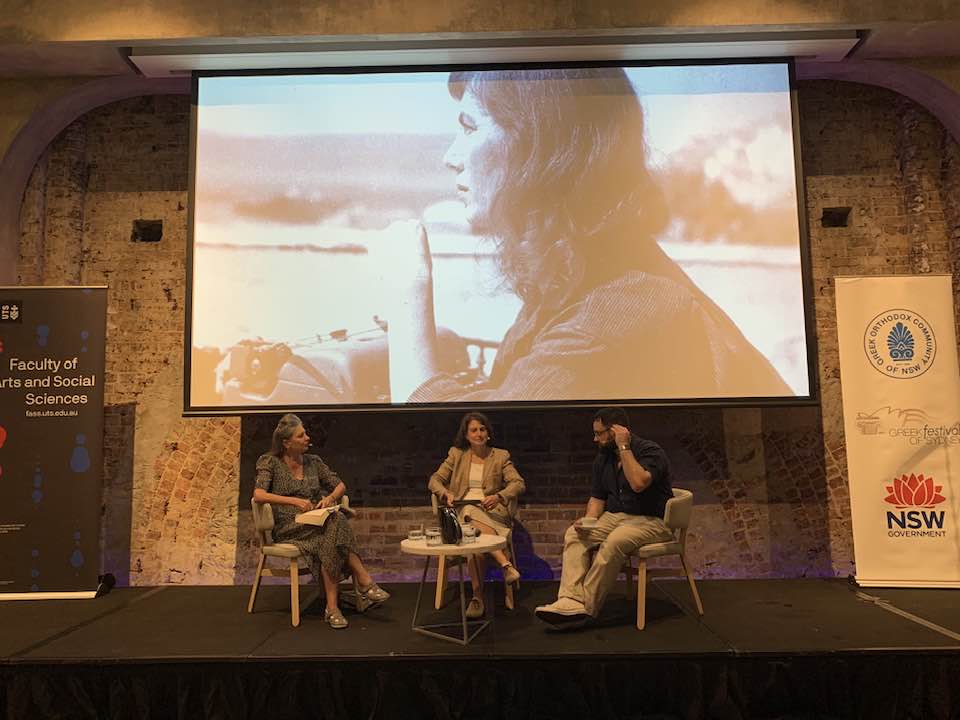
The first session was appropriately called Mothers, Sons and Daughters: Journeys in which two prominent writers recounted their lived experiences with their respective mothers.
Anna Patty, a senior journalist with the Sydney Morning Herald, convened the first panel featuring Susan Johnson and Peter Polites.
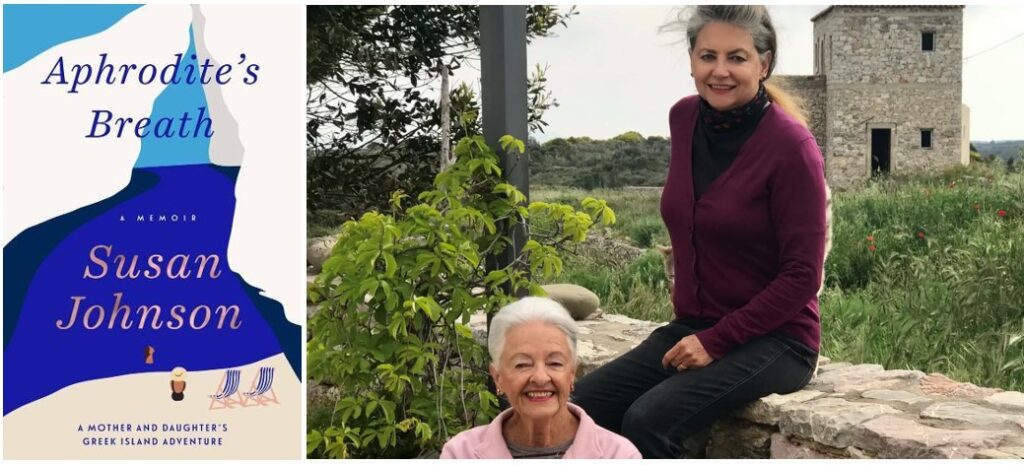
The acclaimed writer and author, Susan Johnson, has just released a memoir, Aphrodite’s Breath: A Mother and Daughter’s Greek Island Adventure, in which the author returns to the island of Kythera (Cerigo) - the legendary birthplace of Aphrodite - but this time with her elderly mother, Barbara.
It was as though Susan’s return to the island of her youthful summers, as one reviewer has noted, was preordained: the Australian writer had fallen fatally and irrevocably in love with Kythera in the 1970s on a trip “that set the course for the rest of my life – as a writer, as a perennial exile, as a person”.
In paying her respects to the Greeks who have contributed so much to this country, Susan noted the sublime irony of being driven to the event by a taxi driver who turned out to be of Kytherian heritage himself.
The book takes the reader on a magnificent journey experiencing the Kytherian landscape in all its facets: historical, cultural, social and geographic. At the same time the author has to contend with an elderly mother who does not appear, outwardly at least, to enjoy this Greek island experience.
Kythera lies literally at the crossroads of the Mediterranean. Traces of Minoan civilisation, Venetian occupation and British imperial protection, are still evident on what is the southernmost island in the Ionian Island group. An island that also saw its young sons (predominantly) and daughters leave in their thousands searching for a new life in Australia without forgetting their roots. An island that renews this Australian connection every summer with tourists returning to the Kythera of their parents and grandparents.
Susan Johnson captures the warm and welcoming spirit of this land at the same as providing an intimate insight into the mother-daughter relationship.
According to one reviewer, Aphrodite’s Breath would sit comfortably beside Charmian Clift’s travel memoirs. I would add the works of the English adventurer Paddy Leigh Fermor.
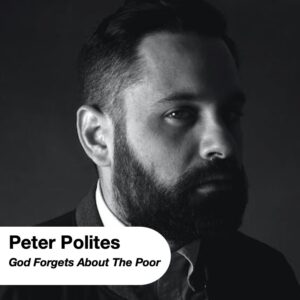
Peter Polites is a novelist from Western Sydney best known for his queer noir writing. But the young writer was challenged by his mother to write about her, including her tumultuous experiences as a young girl on the Greek island of Lefkada during war and civil dictatorship and her journey from a village in Greece to suburban life in Australia.
Peter lovingly described his mother’s anguished plea: “Why don’t you write about me? People will love my suffering.”
His mother’s stark memories of war, of the sight of blood in the town square, things you see and cannot forget (because the “memories are in my nostrils”) are the stuff of Greek melancholia. But she and her sisters remained resolute and thanks to their enlightened father they were independent and well-educated, in contrast to the boys in the extended family who Peter amusingly labels “beautiful dullards”.
God Forgets About The Poor, to be released in August, is an intimate letter from a son to a mother and a masterpiece of character study.
Playing with fire: Fusing history with fiction. 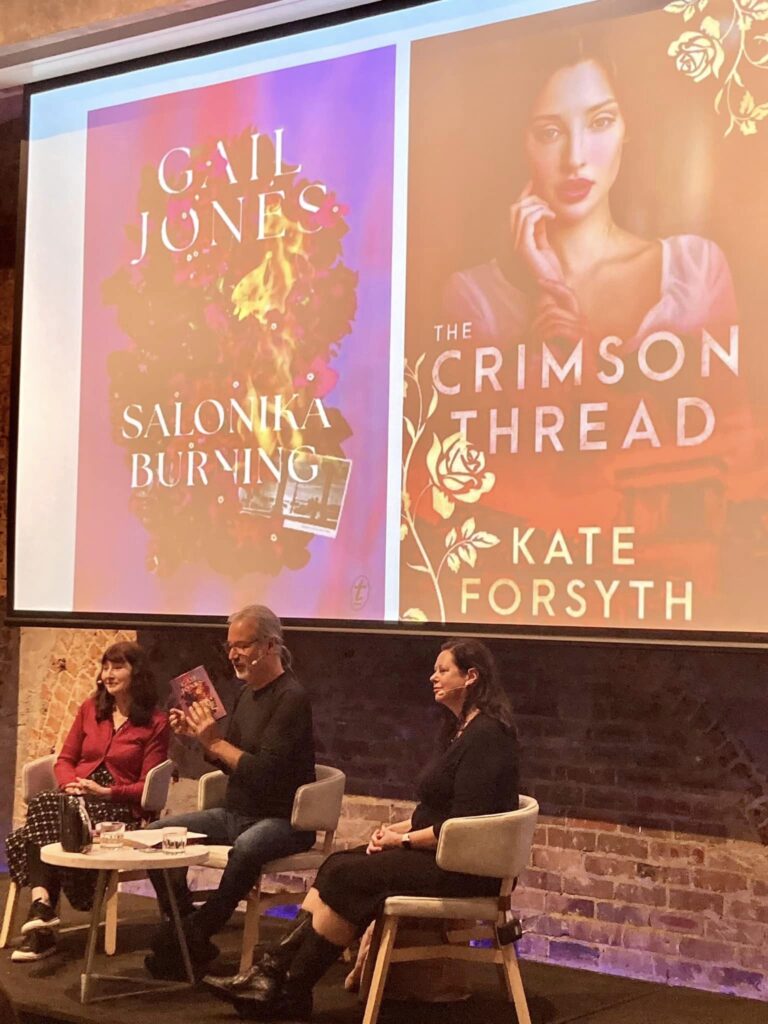
After the break the audience was treated to an enthralling conversation with two of Australia’s leading writers and storytellers, Gail Jones and Kate Forsyth, who were both inspired by separate historical events in Greece to produce novels which literally fused history with fiction.
In Salonika Burning, Gail Jones, who is Professor in the Writing and Society Research Centre at Western Sydney University, writes of the events of the Great Fire of 1917 which destroyed a large part of the northern city of Thessaloniki (then known as Salonika). The author confided that she has never actually been to the city but had undertaken extensive research and was informed by various seminal works, including the acclaimed historian Mark Mazower’s book Salonica, City of Ghosts: Christians, Muslims and Jews 1430-1950. Her novel explores these tumultuous events of a city on fire through the lens of four young volunteers amidst the ensuing chaos and upheaval.
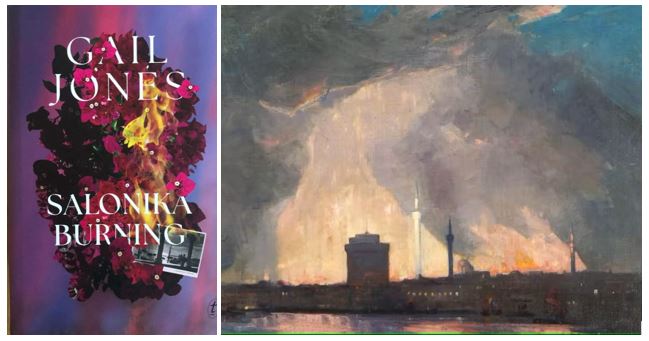
The award-winning author, poet and storyteller Kate Forsyth introduced her latest novel, The Crimson Thread, which is set during the dark days of the Nazi occupation of Crete and reimagines the myth of Theseus’ confrontation with the legendary Minotaur in the labyrinth. The author’s grand uncle had fought in Crete and Kate, who has visited Crete and has, in her own words, become deeply immersed in the island’s history and culture, was inspired by his desperate fight and escape over the White Mountains in Crete and by the heroic efforts of the Australian and New Zealand forces who were sent to the island in a valiant but doomed rearguard action against the advancing German forces.
This story of love and war, betrayal and secret code hidden in Cretan embroidery, also recalls the heroism of the locals, including Cretan women, who bravely fought against the Nazi invaders and provided the first outright resistance to Hitler’s war machine in the early dark days of the Second World War.
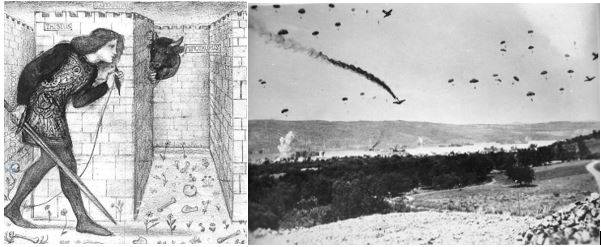
This interesting session was well facilitated by Dr Phil Kafcaloudes, an ABC journalist and author who also wrote Someone Else's War, a historical fictional novel based on his maternal grandmother Olga’s incredible experiences as a resistance fighter, spy and British agent in the Second World War.
The final session in the morning part of the program was A Historians Odyssey through Greece in Australia and brought together two eminent historians, Nick Doumanis and Jim Claven, in a discussion mediated by Tony Maniaty, himself a noted journalist, photographer and author.
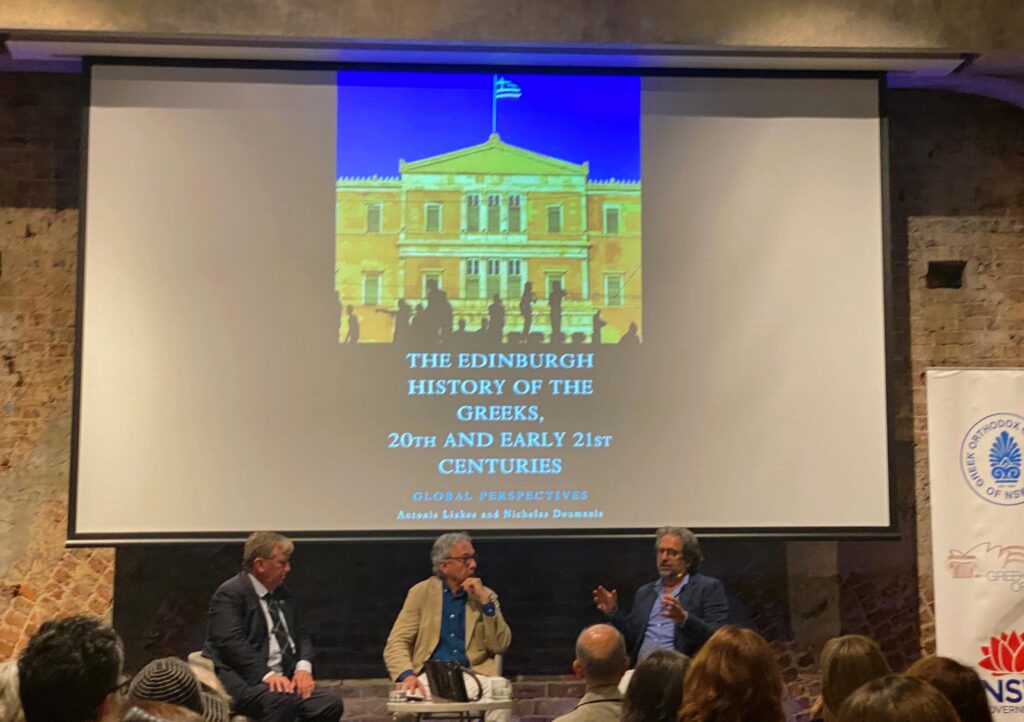
Professor Nicholas Doumanis, who has taught history at the University of NSW and is about to take up the Hellenic Foundation Chair and Professor of History at the University of Illinois in Chicago, has just published his latest work, a collaborative effort with Greek historian Antonis Liakos, The Edinburg History of the Greeks, 20th and Early 21st Centuries.
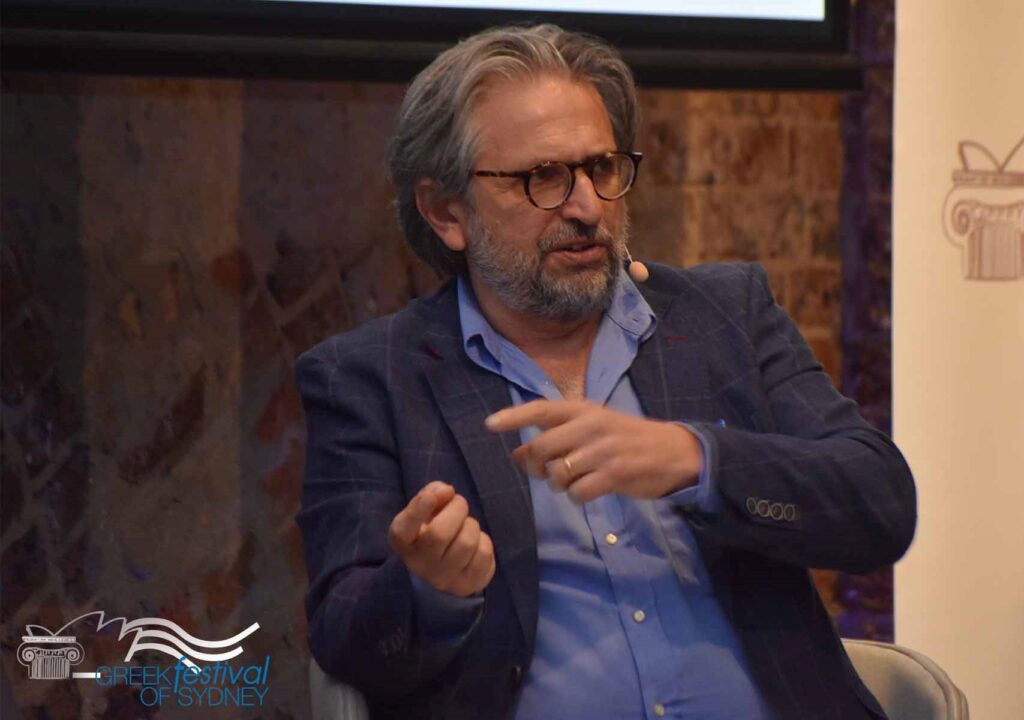
The book sets out to present a narrative of the national history of Greece and Cyprus from a transnational perspective. As the authors explain in the preface to the book, they seek to avoid the trap of “exceptionalism” which tends to ascribe too much explanatory power to the Greek character and to the classical and Ottoman historical heritages.
Drawing on recent research on popular culture, social memory and other areas of analysis that do not feature in most histories of modern Greece, the authors write about the people of Greece and the broader Greek world, including Cyprus and the diaspora, whose histories are indelibly tied with the Greek nation, starting from the eve of the first Balkan war in 1912 and ending in 2020. As Nick Doumanis points out, Greek and Cypriot societies became urbanised, secularised and more ‘western’ but have also lurched from crisis to crisis, having experienced two destructive war decades (1912–1922 and 1940–1949), the Turkish invasion of Cyprus in 1974 and the economic crises of the 2010s.
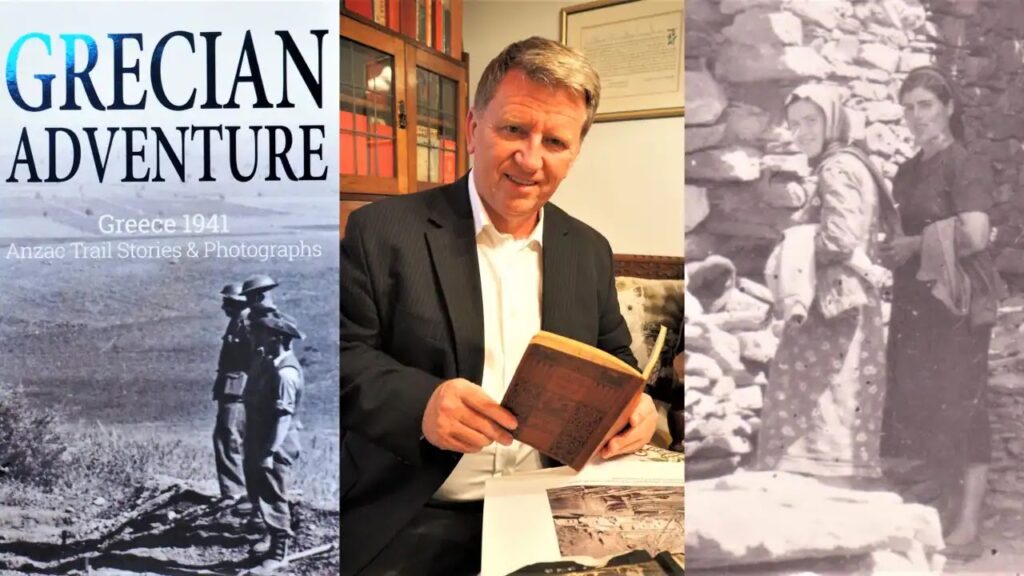
The Melbourne historian Jim Claven has just published Grecian Adventure: Greece 1941, Anzac Trail Stories and Photographs which follows in the wake of his epic Lemnos & Gallipoli Revealed: A Pictorial History of the Anzacs in the Aegean 1915-16.
The Grecian Adventure documents the ANZAC fateful but battle-hardened trail across Greece in April-May 1941, from the northern Greek battlefields of Vevi and Servia, through Brallos and Corinth, to Kalamata and the Mani, and finally on to Crete. The Greek ANZAC tradition, which dates back to the Gallipoli campaign in 1915, is told through the personal stories of soldiers and their lived experiences and with the help of priceless diaries kept by Australian soldiers as well as rare photographs held in Australian archives. As Jim explained, his presentation centred on the power of photography to bring to life the experience of Australians in Greece in times of war.
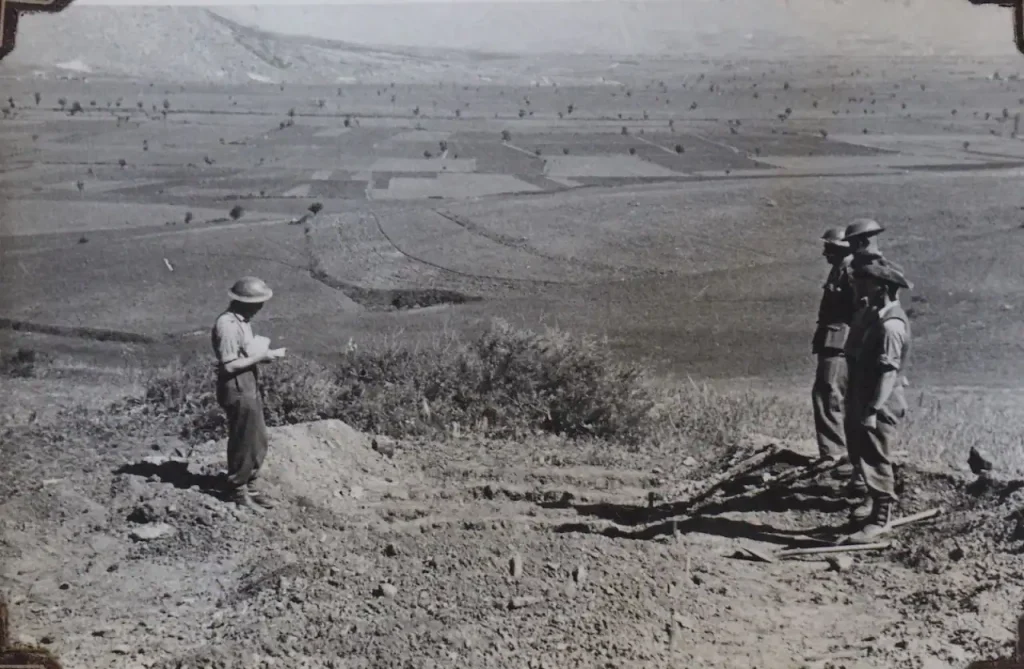
Are we white yet?
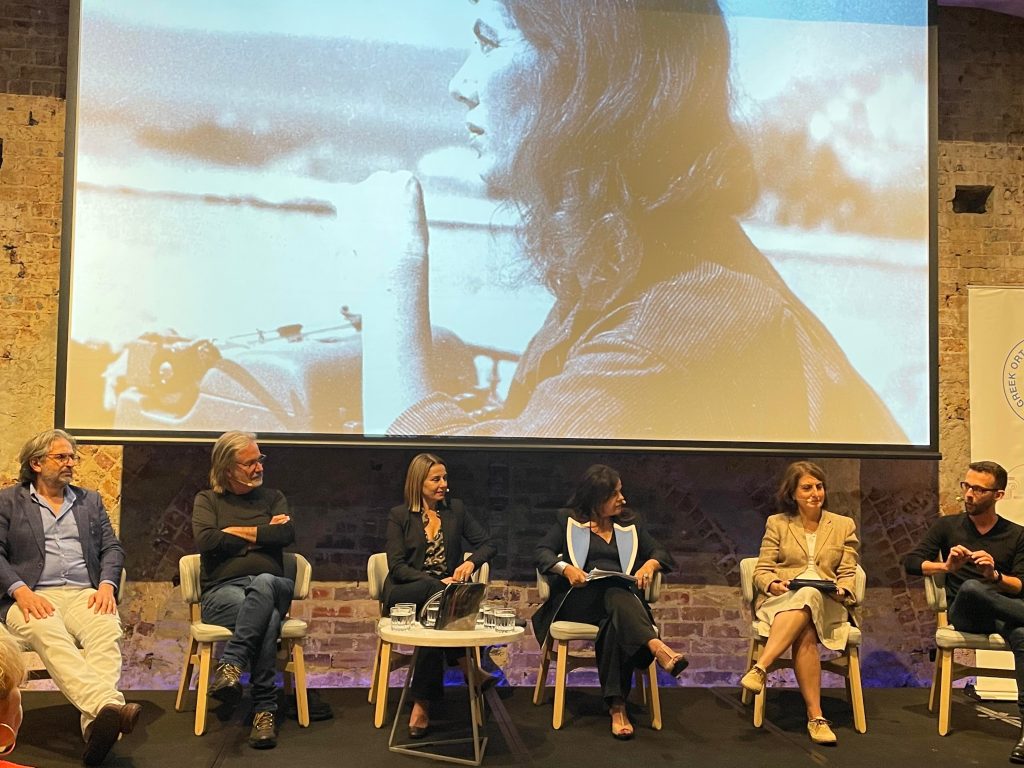
After the lunch break, the audience participated in a broadcast recorded for ABC Radio National’s Big Ideas program with the seemingly provocative title “Are we white yet? Let’s talk diversity".
Dr Helen Vatsikopoulos, who directed the symposium and is a Professional Fellow at UTS, led off the panel discussion (or, as she called it, “my big fat discussion”) by admitting a certain level of hyperbole in the title. The question posed was a take on that perennial question that children ask - “are we there yet” - but in the context of where Greek Australians, as one of the oldest migrant groups in the country, fit in today’s multiculturally diverse society. Has our Greek “otherness” made way for social acceptance and inclusion? Have we moved up the immigration queue? In short, are Greeks now considered ‘white’ within Australian society?
The panel comprised Phil Kafcaloudes, Nicholas Doumanis, Paul Farrell, Mary Coustas and Anna Patty and what ensued was an interesting discourse on identity and a sense of place.
Nick Doumanis observed that Greek immigrants were at first very much on the margins of an English-speaking settler society that was quite racist. A lot has changed, but how much?
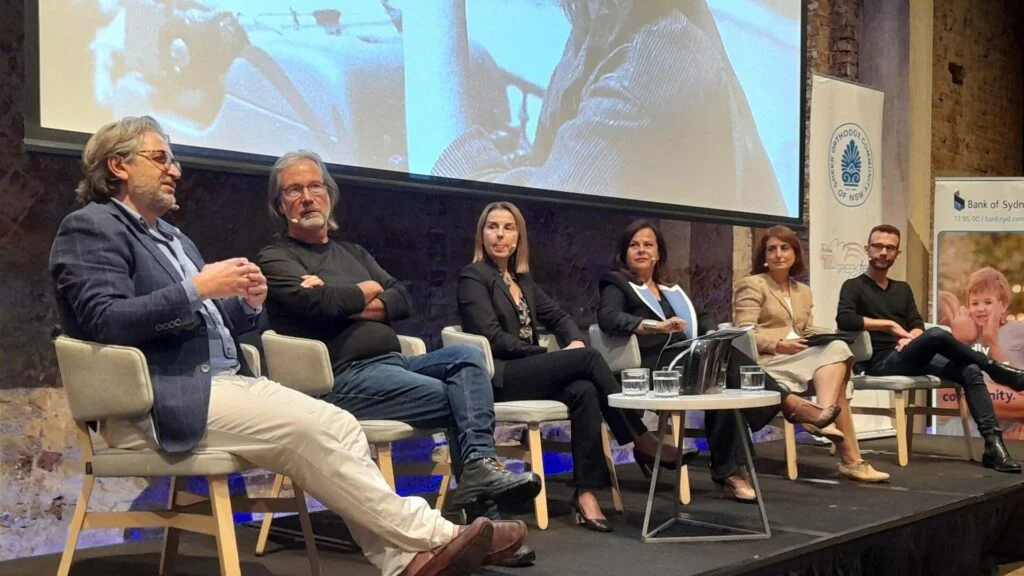
The anglicising of Greek surnames is a case in point. When a young Phil Kaff went to the ABC in 1988 he was told to revert to his family name of Kafcaloudes, not out of some enlightened respect or sensitivity for his cultural heritage but because the national broadcaster, in the words of his interviewer, did not have enough ‘wogs’ in the place.
Interestingly, Phil Kafkoulides has actually done some research on the incidence of Greek immigrants, especially in the post-World War II era, adopting new, anglicised surnames. Surnames were often shortened or rearranged or changed altogether. Based on his research, Phil offered three main reasons:
The first was simple convenience because they didn't want to have to go spelling a name like Kafcaloudes to everybody all the time. This was reinforced by Anna Patty who revealed that her father, whose surname was Varipatis, had arrived in Australia as an 11 year old boy and at immigration control was confronted by an officer who suggested that he alter his name to Patty simply to avoid confusion.
The second reason was acceptance as migrants felt that they would find it easier to get a job if they were not perceived as being “really Greek”.
But the third reason was the most troubling, namely racism, where Greek immigrants, particularly in the 1930s, feared retribution because of their surname.
Mary Coustas told the audience of her experience as an aspiring actress when she was told bluntly by a leading talent agent that she was “limited”, the hidden meaning of which quickly dawned on a young Mary and actually fed her steely determination to succeed.
At the conclusion of the panel discussion, the mood of the room (if I picked it correctly) is that we are not quite white and we are comfortable with that.
Picture this: Power of visual storytelling
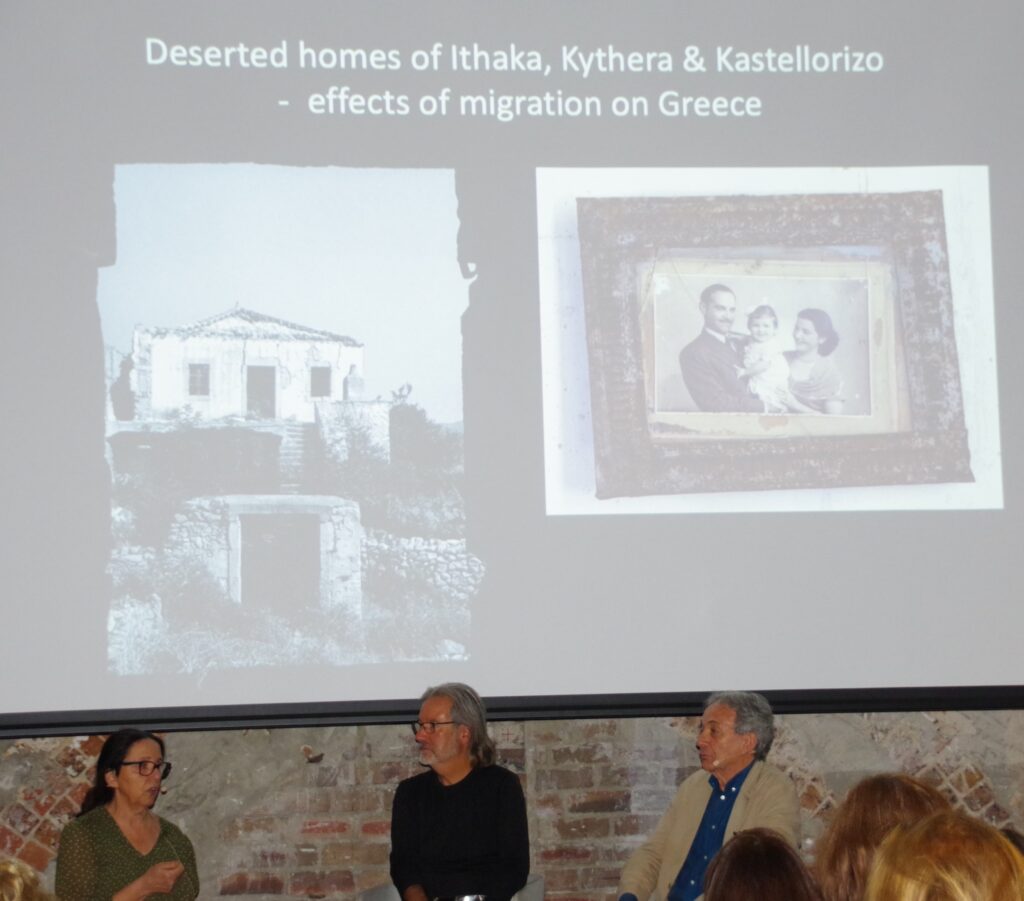
The power of visual storytelling was the subject of the fourth session which featured well-known documentary photographers Effie Alexakis and Tony Maniaty, with the multi-faceted Phil Kafcaloudes in the chair as moderator.
Effy Alexakis is an acclaimed documentary photographer whose works are held in both public and private collections in Australia and Greece. Effy, together with her husband and social historian, Leonard Janiszewski, have been researching the Greek-Australian historical and contemporary presence in both Australia and Greece since 1982.
Their project and archives, In Their Own Image: Greek-Australians, is widely regarded as one of the most significant diasporic collections of visual, oral and literary material in the country.
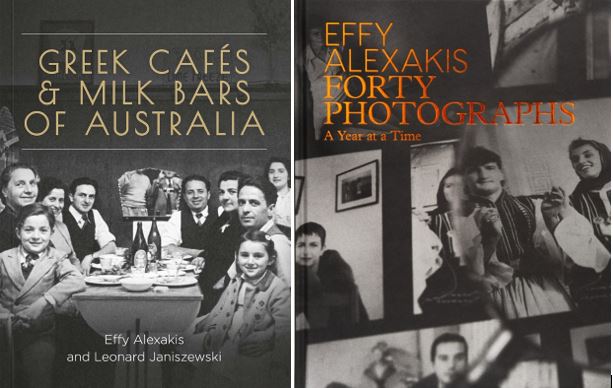
Effy discussed the reprinting of their iconic book, Greek Cafes and Milk Bars of Australia, as well as her latest book, Effy Alexakis Forty Photographs a Year at a Time in which she presents one contemporary image to represent each year since she embarked on this extraordinary photographic odyssey in 1982 to document the Greek-Australians in both Australia and Greece.
As Richard Neville, Mitchell Librarian and Director, Engagement · State Library of NSW, writes in the foreword to Forty Photographs, Effy’s work is a “timely reminder that while migration is often framed as being about policy and politics, it is actually fundamentally about people”.
A recent review of her work has also featured in Greek City Times.
Tony Maniaty, an award-winning Greek-Australian author and photojournalist based in Sydney and Paris, is about to release a new photobook, New Athenians, featuring candid street portraits of the new arrivals and young Greeks transforming the face of modern Athens, beyond the financial crisis, covid and the influx of refugees. Tony spent two months on the streets every day, in summer, shooting full-length portraits of a changing and increasingly diverse Greece – foreigners who’ve migrated, coping with relocation and a strange language, street vendors, small business operators along with Greeks who do not necessarily conform to traditional societal norms.
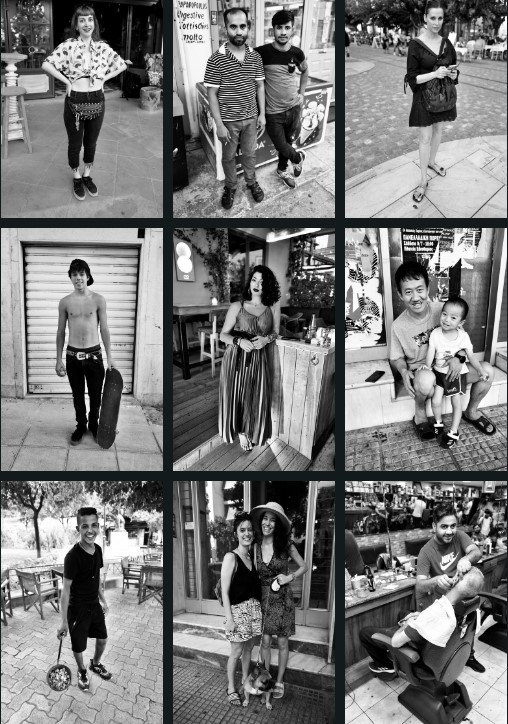
As Tony observes, Athens remains an amazing, sprawling metropolis of three-million. Ancient or this century, it’s still one of the great cities of the world.
The Write Stuff: Hydra’s Literary and Photographic Age
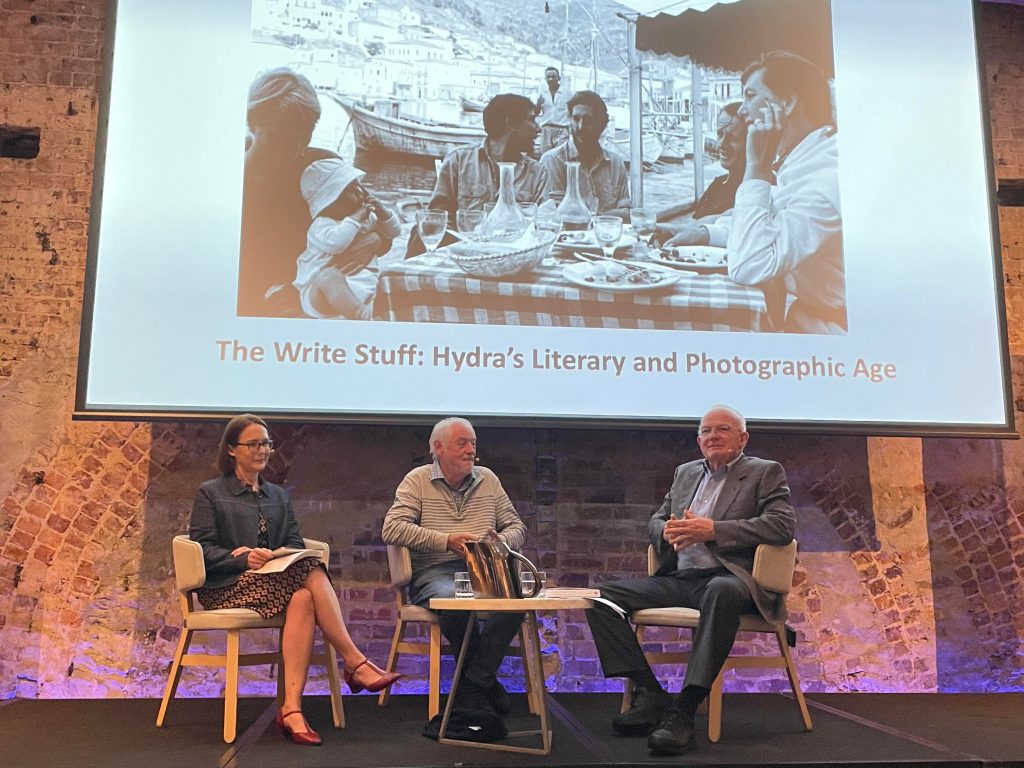
The influence of the gifted Australian writer Charmain Clift was to be the focus of the last two sessions of the festival, the first of which featured Tanya Dalziell, Professor of English and Literary Studies at the University of Western Australia, and Paul Genoni, Adjunct Associate Professor at the School of Media, Culture and Creative Arts at Curtin University, who are the co-authors of Half the Perfect World: Writers, Dreamers and Drifters on Hydra, 1955-1964.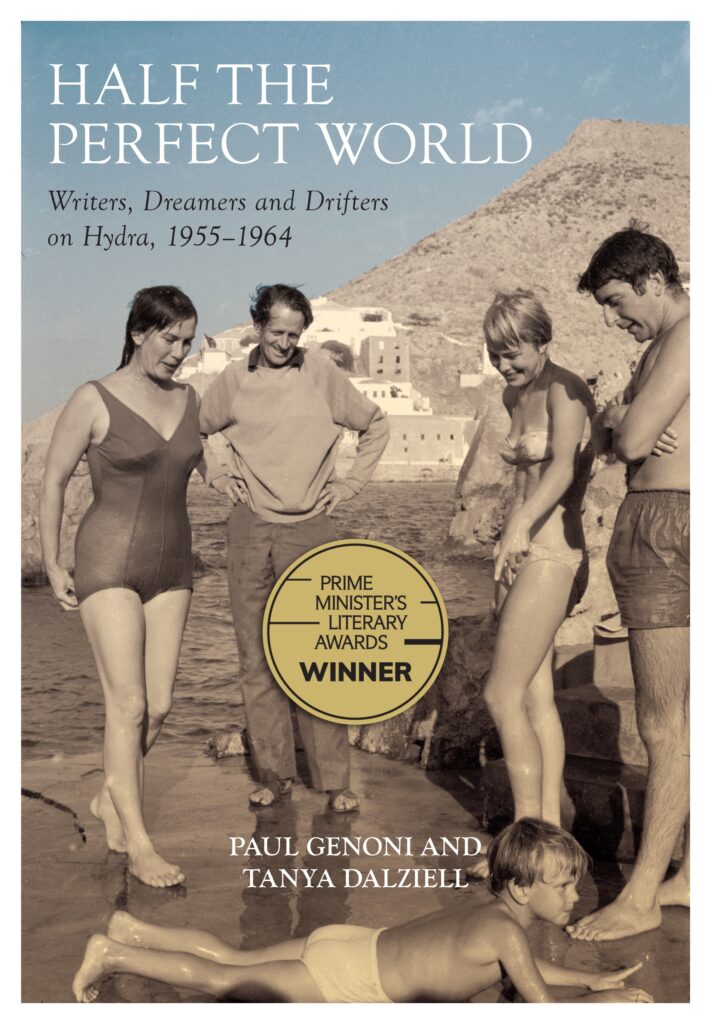
This discussion was moderated by the author and commentator, David Hill, who has had a long love affair with Greece dating back to 1973 when he first visited Athens and who has been a passionate advocate for the return of the Parthenon Sculptures (aka Elgin Marbles).
The winner of the non-fiction Prime Minister’s Literary Award, Half the Perfect World tells the story of the expatriate community of writers, painters, and sculptors - the so-called "drifters and dreamers”- that flourished on the Greek island of Hydra in the years 1955-1964 under the influence of the Australian literary adventurers, George Johnston and Charmain Clift.
Clift and Johnston, whilst attempting to pursue a creative life on the island, were nevertheless very hospitable to newcomers, providing meals and shelter as well as introductions to locals. And as the rich photographs of the LIFE magazine photo-journalist James Burke attest, the Australians were often the centre of conversation, whether it be outside the Katsikas kafenio on the dockside or the Douskos taverna with its famous leaning tree in the front courtyard.
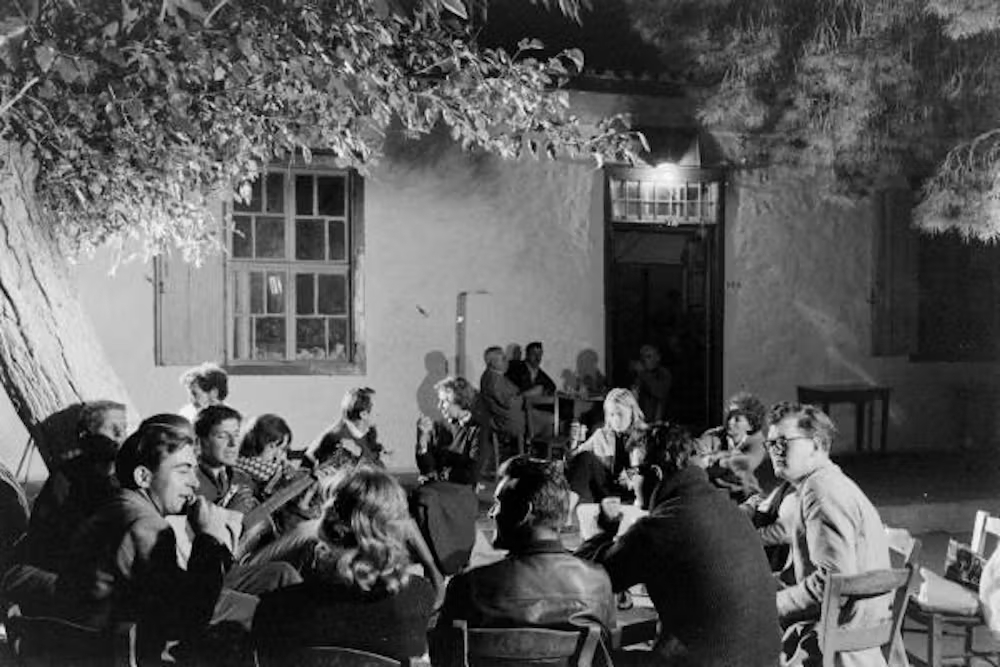
By drawing on many previously unseen letters, manuscripts and diaries, and richly illustrated by Burke’s eyewitness photography, the authors delve into the private lives and relationships of the Hydra expatriates on what was half the perfect world:
“Their years in the Aegean may have been half perfect at best, but it was on Hydra that they connected to a place, a lifestyle and a community that allowed them to live and express themselves intensely, and as they wished. They refused to believe their dreams were an illusion, or that boldness, ambition and a leap-of-faith might not allow them to reach beyond the constraints of their birthright.”
One of the writers who was introduced into the Bohemian rhapsody on Hydra was a charismatic but relatively unknown Canadian singer and poet named Leonard Cohen, who like Johnston and Clift, eventually bought a house on Hydra and lived there until 1967.
The great American writer, Henry Miller, who visited the island in 1939, thought that Hydra was “aesthetically perfect”, possessing a purity and wild and naked perfection which would attract expatriate adventurers like Johnston, Clift and Cohen to this Greek island artist-community.
The authors also point out that the sojourn of the two Australian writers on Hydra is “one of the most mythologised episodes in Australian literary history” inspiring biographies, works of fiction, photo-essays and plays.
The final session of what was a very productive day was 100 years of Charmian Clift – Translating Greek Island life to the world featuring a panel discussion, chaired by Helen Vatsikopoulos, with Australia’s Ambassador to Greece, Arthur Spyrou, Charmain Clift’s biographer, Nadia Wheatley, and Clift’s Greek translator, Fotini Pipi, regarding her experiences in Greece and her life in general.
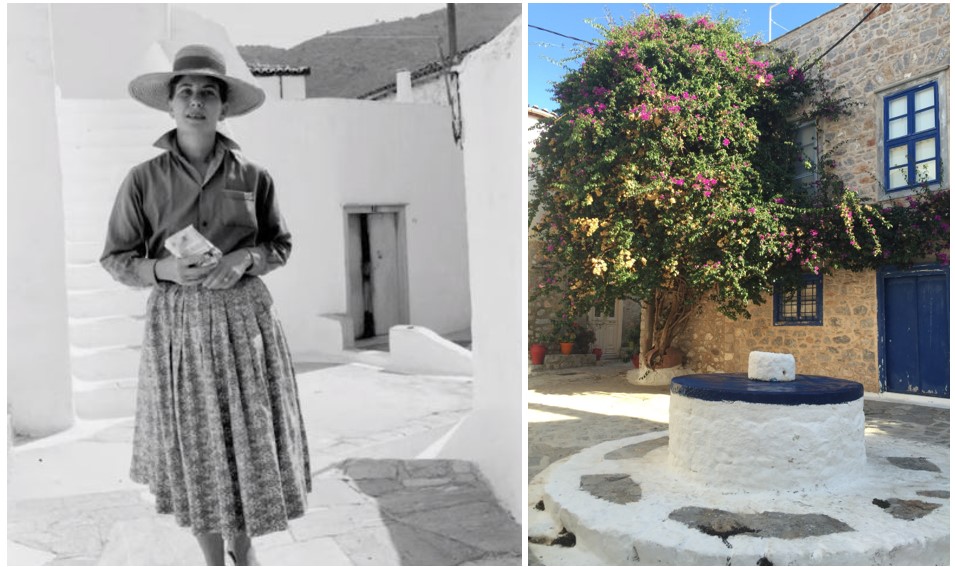
Charmain Clift wrote two famous travel memoirs, Mermaid Singing and Peel Me A Lotus, whilst living first on Kalymnos and then Hydra, and ‘translated’ the aesthetics of Greek island life and culture and the expatriate experience.
In an early passage in Peel Me a Lotus Clift surveyed the dream-like qualities of the town of Hydra and how it inspired a quest for a utopian adventure:
(The town) … rises in tiers around a small, brilliant, horseshoe-shaped harbour—old stone mansions harmoniously apricot-coloured against the gold and bronze cliffs, or washed pure white and shuttered in palest grey: houses austere but exquisitely proportioned, whose great walls and heavy arched doors enclose tiled courtyards and terraced gardens. The irregular tiers are broken everywhere by steep, crooked flights of stone steps, and above the tilted rooftops of uniform red tiles rise the octagonal domes of the churches . . . Above the town the mountains shoot up sheer, their gaunt surfaces unbroken except for an odd white mill or two . . . and three monasteries, the highest of them so close to heaven that at night its lights are looped among the stars.
In The Flame: Poems and Selections from the Notebooks, a valedictory volume published after Leonard Cohen’s death, the legendary artist, who famously dedicated his first show in Sydney to George Johnston and Charmain Clift “who taught me how to write”, penned a notebook entry in which, according to Dalziell and Genoni, Cohen reflected on how singular and enduring his experience on Hydra was:
I could not slip away
without telling you
that I died in Greece
was buried in that
place where the donkey
is tethered to the olive tree
I will always be there
The Greek Australian Writers Conference has reaffirmed this self-evident truth.
When it comes to the allure of Greece we will always be there.
George Vardas is the Arts and Culture Editor and is a Past President of the Kytherian Association of Australia and current board member of the Kytherian World Heritage Fund.

